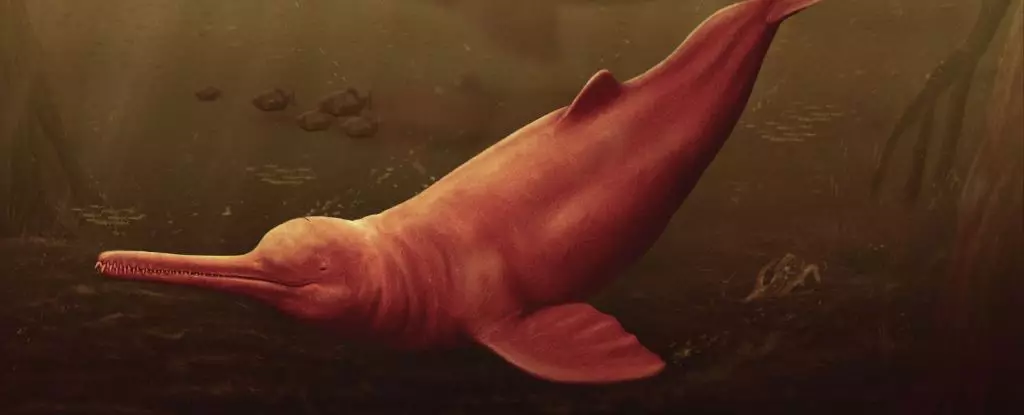The Amazon basin was once home to a massive freshwater toothed whale that lived around 16 million years ago. This ancient dolphin, known as Pebanista yacuruna, measured up to 3.5 meters (11.5 feet) in length, making it one of the largest of its kind. Although smaller than modern-day orcas, Pebanista highlights the incredible biodiversity that existed in the Amazon’s waters millions of years ago. Surprisingly, this ancient dolphin is not closely related to the current Amazon river dolphins but instead shares genetic similarities with dolphins from the Ganges and Indus rivers in South Asia.
Freshwater river dolphins have distinct characteristics that set them apart from their marine counterparts. They are often pinker in color, possess longer beaks, and have unique hunting strategies suited to their murky habitats. Pebanista was identified from a single skull discovered in the Miocene fossil beds of the Pebas Formation. Despite its incomplete nature, the skull provided valuable insights into the dolphin’s appearance and behavior. Like other river dolphins, Pebanista had large crests in its forehead for echolocation, a crucial ability in muddy waters where visibility is limited. The elongated snout of Pebanista suggests a diet of fish, similar to modern river dolphins.
Researchers believe that Pebanista originated from marine cetaceans that ventured into the Amazon basin when it was a network of rivers and lakes known as Pebas. Upon finding an abundance of prey in the region, these dolphins adapted to their new environment and thrived for millions of years. However, as the Pebas system evolved into the modern Amazon basin, the landscape changed, and Pebanista’s hunting grounds disappeared. The extinction of Pebanista created an ecological niche that was eventually filled by the river dolphins we see today. This cycle of adaptation and extinction provides valuable insights into the dynamics of changing ecosystems and the vulnerability of species in a shifting environment.
Implications for Modern Ecosystems
The discovery of Pebanista sheds light on the adaptability of species in response to environmental changes and offers a glimpse into the interconnectedness of past and present ecosystems. While the Amazon basin has undergone significant transformation since the Miocene era, the structure of the food web may still bear similarities to its ancient counterpart. Studying the evolutionary history of freshwater dolphins not only deepens our understanding of prehistoric life but also underscores the importance of biodiversity conservation in safeguarding ecosystems for future generations.
The story of Pebanista yacuruna serves as a reminder of the rich and complex history of the Amazon basin and the remarkable creatures that once inhabited its waters. By unraveling the mysteries of the past, we gain valuable insights into the processes of evolution, adaptation, and extinction that shape our world today. The legacy of Pebanista lives on in the genetic heritage of its modern relatives, highlighting the interconnected nature of life on Earth and the need to protect and preserve our planet’s diverse ecosystems.

Leave a Reply